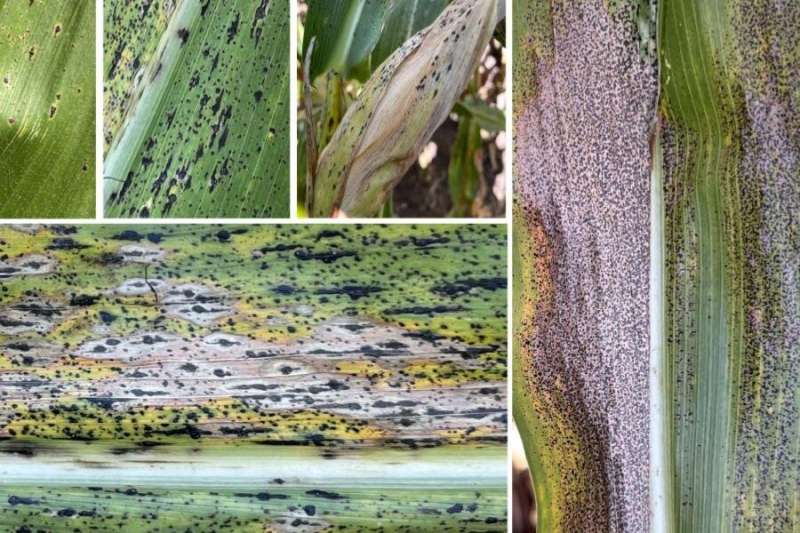This article has been reviewed according to Science X's editorial process and policies. Editors have highlighted the following attributes while ensuring the content's credibility:
fact-checked
trusted source
proofread
Researchers develop resource to identify corn tar spot

Corn tar spot is a new disease causing significant yield loss in the United States. The lack of information about the pathogen and epidemiology of the disease—which was first reported in the U.S. in 2015 and has since spread to multiple states, including Minnesota in 2019—has made it difficult to diagnose and treat properly. Corn tar spot also appears similar to other leaf diseases and abiotic disorders, making proper identification even more challenging.
Now, University of Minnesota researchers, in collaboration with their partners at Purdue University and GROWMARK, have published a guide in Plant Health Progress to help farmers and researchers recognize the symptoms and signs of the disease, an important framework for ensuring correct diagnosis and management.
Key aspects for diagnosis:
- Tar spot symptoms appear initially as flecking and mild chlorosis (yellowing) on leaves, stalks and husks.
- The black tar spots form after the flecking or yellowing. These spots are the fungal structures called stromata, which are embedded in the plant tissue. They are elongated, raised and can not be removed by rubbing them.
- The symptoms and signs can develop at any corn growth stage throughout the summer, but typically develop most severely in the late summer.
"Tar spot is a significant disease of corn and can be challenging to manage. Proper and timely diagnosis is critical for managing tar spot and reducing corn yield losses," said first author José E. Solórzano, a doctoral student in the Department of Plant Pathology. "If you are concerned about tar spot in your corn because you see black spots on the foliage, and the spots cannot be removed by simple rubbing, consult the diagnostic guide for more guidance or contact the Plant Disease Clinic in the Department of Plant Pathology at the University of Minnesota."
More information: José E. Solórzano et al, Tar Spot of Corn: A Diagnostic and Methods Guide, Plant Health Progress (2022). DOI: 10.1094/PHP-04-22-0033-DG
Provided by University of Minnesota



















